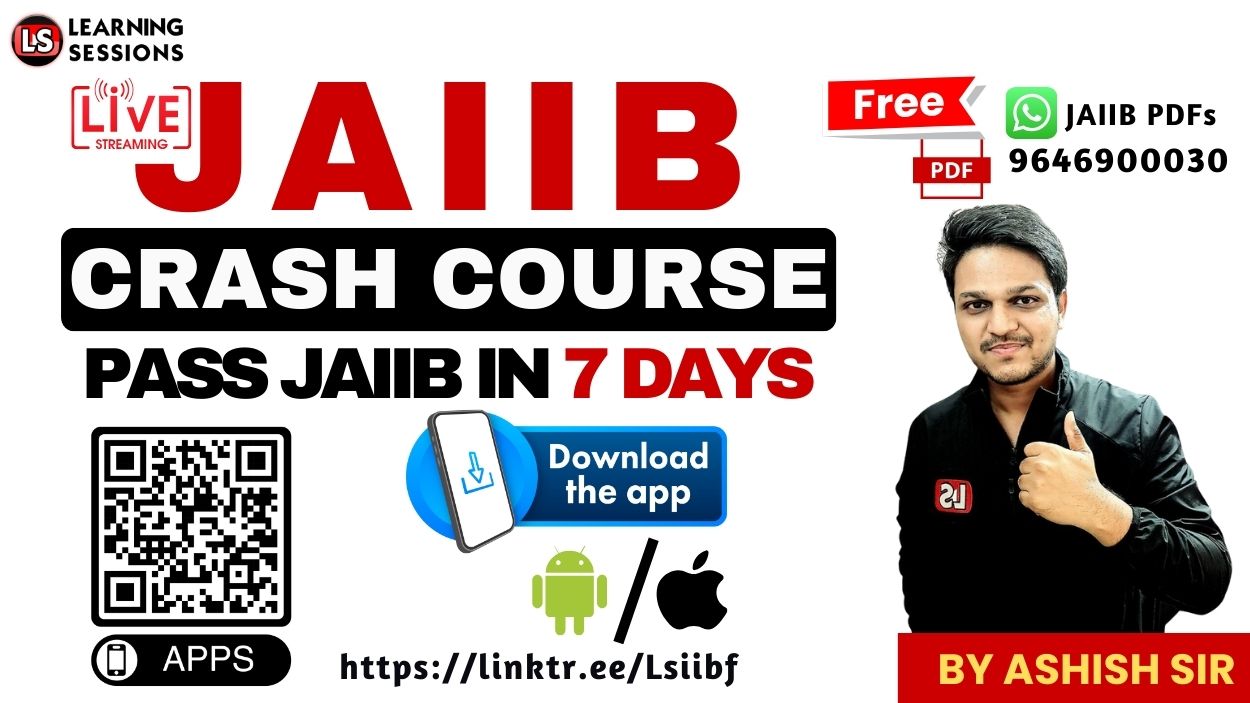Does the term YTM make you feel like you’re decoding rocket science? You’re not alone! For most banking aspirants—especially non-commerce students—bond valuation and YTM (Yield to Maturity) can seem intimidating. But here’s the good news: once you grasp the logic, it’s one of the most scoring topics in your JAIIB’s AFM paper.
In this value-packed video, we decode YTM in the simplest way possible — in a bilingual style (Hindi + English) that makes finance feel less frightening. From basic debt concepts to types of bonds, annuity logic, present value tricks, and solving full-length questions using PVIF and PVIIFA — it’s all explained step-by-step using relatable examples and easy calculator methods.
📚 JAIIB Study Resources 📚
👉 Check Here
👉 Check Here
👉 Check Here
👉 Get Tests Here
👉 Check Here
Who is this for?
- JAIIB / AFM aspirants
- Banking professionals aiming to master finance
- Students struggling with bond valuation formulas
🎯 Watch this till the end and start solving YTM-based questions like a topper. And hey, don’t forget to drop a comment if it helped you or if you’ve got doubts — I love responding to you all!
🎥 Watch the Full Video Here:
👉 Before we dive in, watch this video for a complete breakdown:
🧠 Understanding Debt and How Companies Borrow (00:01:08)
Let’s start from zero:
When a person borrows money, it’s a debt. Similarly, companies borrow via:
- Term Loans from banks 🏦
- Working Capital via CC/OD
- Trade Credit from suppliers
- Issuing Bonds or Debentures
Debt is repayable. Equity isn’t.
While equity makes investors part-owners, debt like bonds comes with the obligation to repay the principal with interest.
💼 What Are Bonds & How Do They Work? (00:04:10)
A bond is a contract where a company borrows money from investors. In return, it agrees to:
- Pay regular interest (coupon)
- Repay the principal (face value) at maturity
Example:
- Face Value: ₹1,000
- Coupon Rate: 10%
- Term: 5 years
You’ll get ₹100 per year + ₹1,000 at the end.
📊 Important Bond Terminology (00:05:17)
| Term | Meaning |
|---|---|
| Face Value | Also called Par Value; repaid at maturity |
| Coupon Rate | Annual interest percentage paid to the bondholder |
| Maturity | Duration after which principal is repaid |
| Redemption Value | Amount received at the end of the bond’s life |
| Market Value | The price at which bonds trade in the secondary market |
Did you know?
👉 Bond Prices ↓ when interest rates ↑ — and vice versa!
🧾 Types of Bonds Explained Simply (00:10:14)
- Fixed Rate Bonds – Regular fixed coupon payments
- Floating Rate Notes – Coupons tied to benchmark rates like SOFR or LIBOR
- Zero Coupon Bonds – No interest, issued at discount
- High Yield Bonds – Junk bonds with poor credit rating but high return
- Convertible Bonds – Can be converted into equity shares later
- Inflation Indexed Bonds – Adjusted for inflation
- Asset-Backed Bonds – Secured with assets
- Subordinated Bonds – Repaid after other liabilities
- Perpetual Bonds – No maturity date; interest paid forever
- Bearer Bonds – Whoever holds it, owns it (very risky!)
- Government Bonds – Issued by govt; zero default risk
🔄 Annuity & Bond Cash Flows (00:17:09)
Coupon payments = Annuity
You’re receiving equal payments (e.g., ₹100) every year — that’s an annuity.
Types:
- Ordinary Annuity – Paid at the end of each year
- Annuity Due – Paid at the start of the year
To find today’s value of future payments, we use:
- PVIF = Present Value Interest Factor (used for lump sums)
- PVIIFA = PV Interest Factor for Annuities (used for regular coupons)
🔍 Bond Valuation Using PVIF & PVIIFA (00:20:56)
✅ Master Formula:
Bond Value = (Face Value × PVIF) + (Coupon × PVIIFA)
Example:
- Face Value: ₹1000
- Coupon: ₹100
- Maturity: 4 years
- Required Return: 12%
Result: ₹939.2 (bond is discounted)
🎯 Predicting the Answer Without Solving (00:26:55)
| Scenario | Outcome |
|---|---|
| Coupon = Required Return | PV = Face Value |
| Coupon < Required Return | PV < Face Value (Discount) |
| Coupon > Required Return | PV > Face Value (Premium) |
🧪 Live Solved Question (00:28:05)
Q: Bond of ₹1000, 12% coupon, 3-year maturity, 10% required return.
Answer: ₹1049.73 (since Coupon > Required Return)
📌 Conclusion
Understanding YTM and bond valuation is no longer a scary math puzzle—it’s your scoring opportunity in the AFM paper!
Key takeaways:
- Bond basics: Face Value, Coupon, Maturity
- Concept of annuity in bond cash flows
- PVIF/PVIIFA-based valuation
- Shortcut predictions using rate comparison
💪 Try solving a question now and share your answer in the comments!
📥 Download the PDF Notes
Want a quick reference guide with all formulas, tables, and examples?
👉 Download the PDF Notes Now
🎯 Perfect for revision before exams or while solving MCQs.
🚀 Stay Connected
- 👍 Like this post if it helped you
- 💬 Comment your doubts or feedback
- 🔔 Subscribe for more JAIIB/CAIIB content
- 📢 Share with your fellow bankers!







